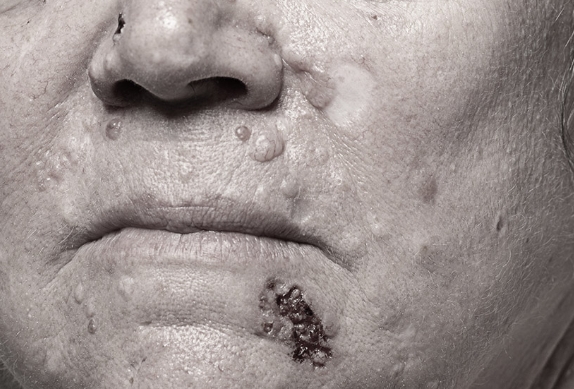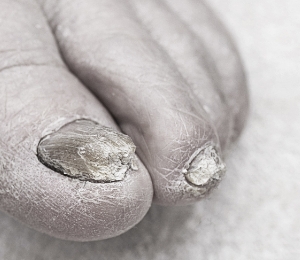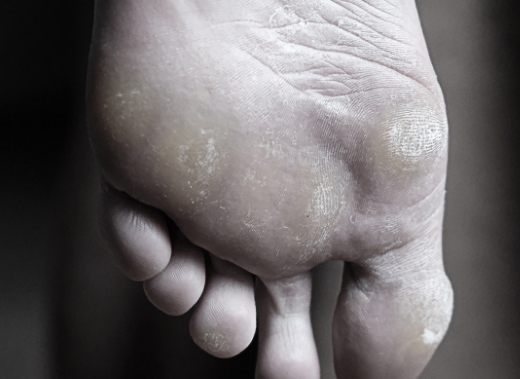Therapeutic Focus
Addressing the needs of rare skin diseases
Our focus lies on skin diseases that demand therapeutic innovation. By pushing the boundaries of medical dermatology, we strive to bridge the gap between existing treatments and the transformative solutions that patients with rare skin conditions deserve.


Gorlin syndrome
Gorlin syndrome, also known as nevoid basal cell carcinoma (BCC), is a rare genetic skin disorder that can affect nearly every organ system in the body.1 People living with Gorlin syndrome are at increased risk of developing BCC skin cancers, which are the most common manifestation of the disorder. Gorlin syndrome affects an estimated 1 in 31,000 people.2
Gorlin syndrome causes debilitating symptoms, including cancerous growths, facial abnormalities, and potentially life-threatening complications, significantly impacting quality of life. Most patients with Gorlin syndrome will develop a few to many thousands of BCC lesions on their skin, with painful surgical excision and other invasive treatments being the only standard of care.1 However, repeated surgical procedures lead to disfiguration and become impossible to continue. Preventing the development of new BCC lesions is critical for people with Gorlin syndrome.
Insights in action
We’re committed to advancing a treatment that offers relief for patients with Gorlin syndrome—but our impact doesn’t stop there. We’ve partnered with the Gorlin Syndrome Alliance to support, educate, and empower patients and their loved ones as they navigate this condition.
Pachyonychia congenita
Pachyonychia congenita (PC) is a rare, genetic autosomal dominant skin disorder that primarily affects the skin and nails. It is characterized by thickened skin of the palms of the hands and soles of the feet, thickened nails, and white patches in mucous membranes. The exact prevalence of PC is unknown, but it is estimated to affect between 7000 and 10,000 people worldwide.3
Many patients with PC experience constant pain that makes it nearly impossible for them to perform normal activities, including walking.
There is currently no FDA-approved treatment for PC.




References:
- Gorlin Syndrome Alliance. About Gorlin syndrome. Accessed August 16, 2023. https://gorlinsyndrome.org/about-gorlin-syndrome/
- Onodera S, Nakamura Y, Azuma T. Gorlin syndrome: recent advances in genetic testing and molecular and cellular biological research. Int J Mol Sci. 2020;21(20):7559. doi:10.3390/ijms21207559
- Wu AG, Lipner SR. Distinctions in the management, patient impact, and clinical profiles of pachyonychia congenita subtypes. Skin Appendage Disord. 2021;7(3):194-202. doi:10.1159/000513340